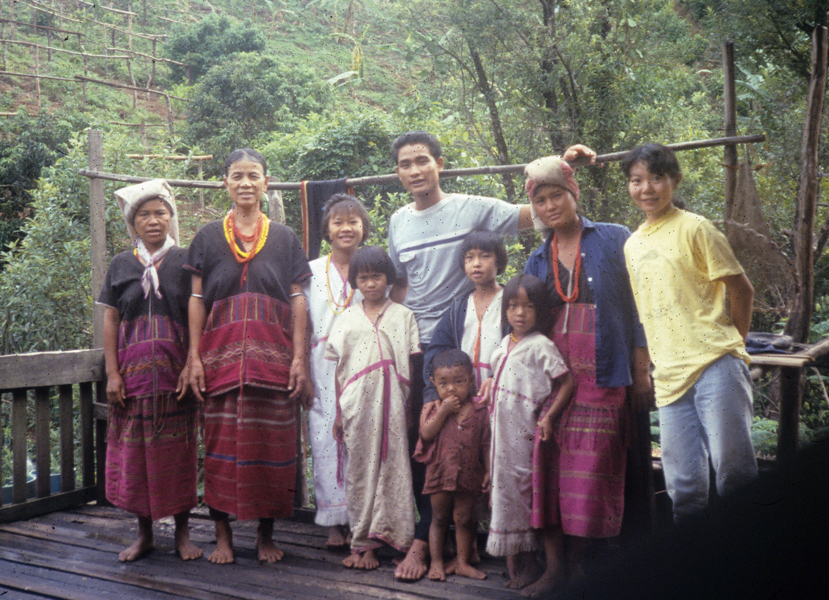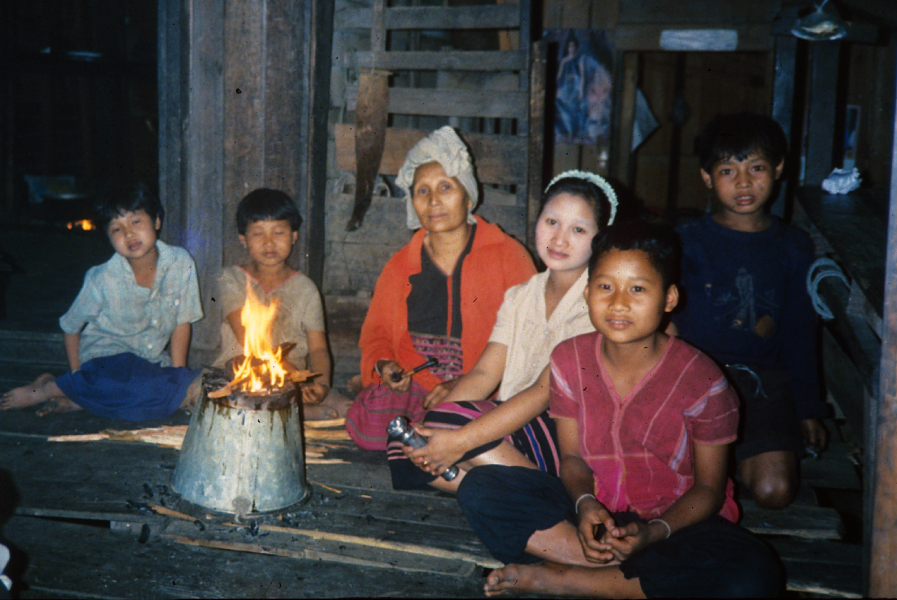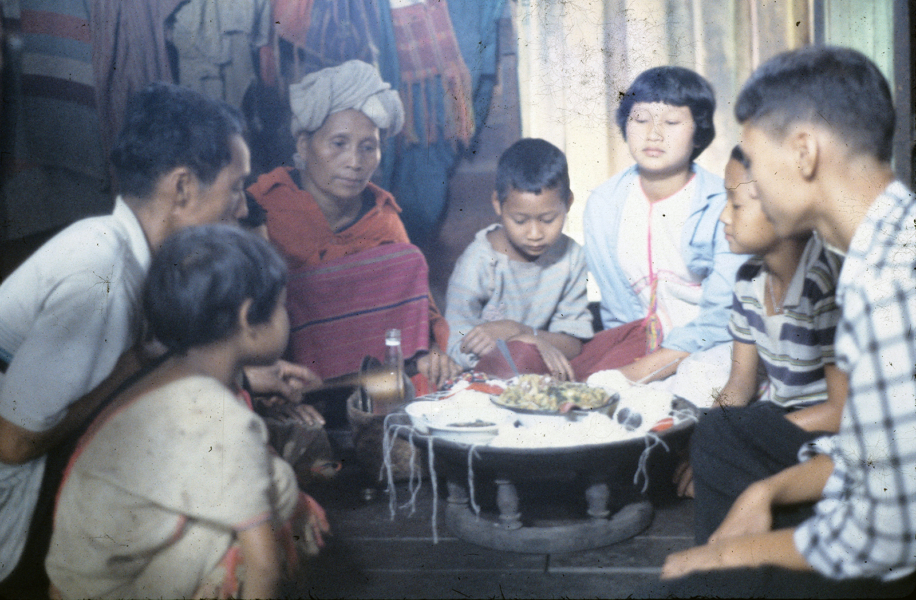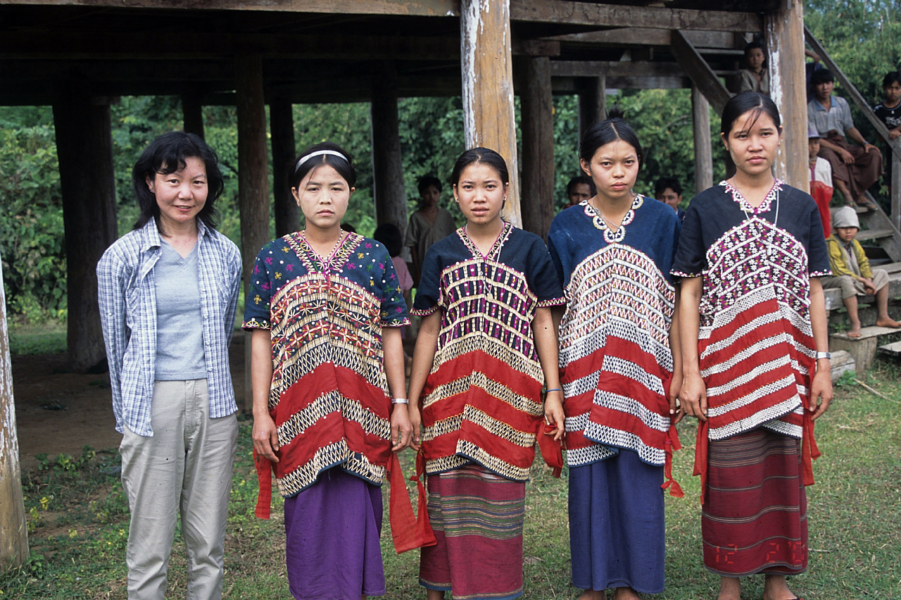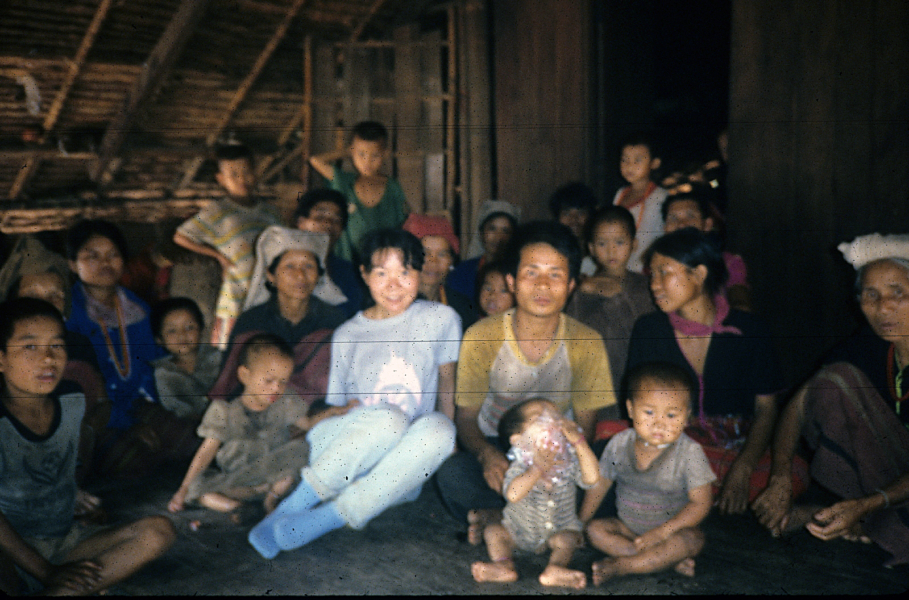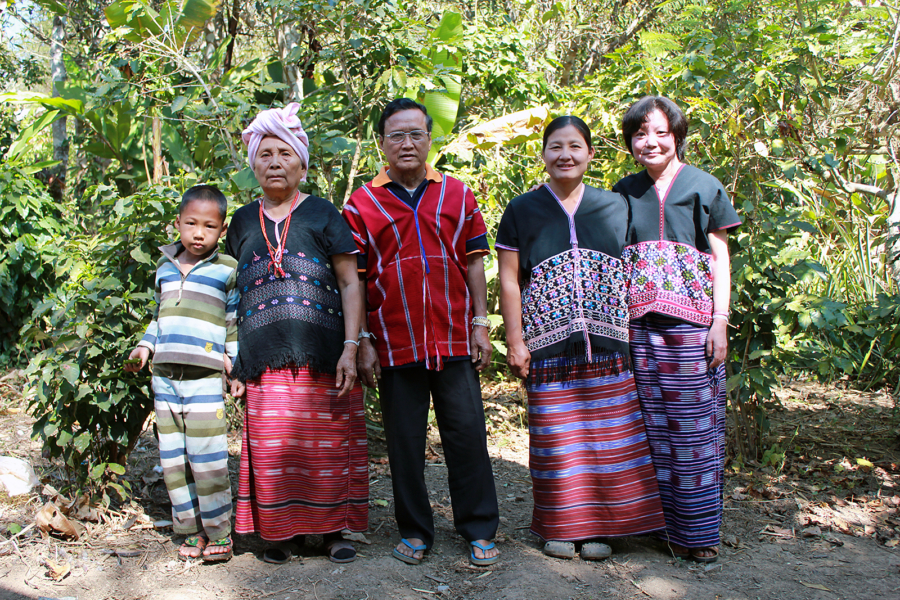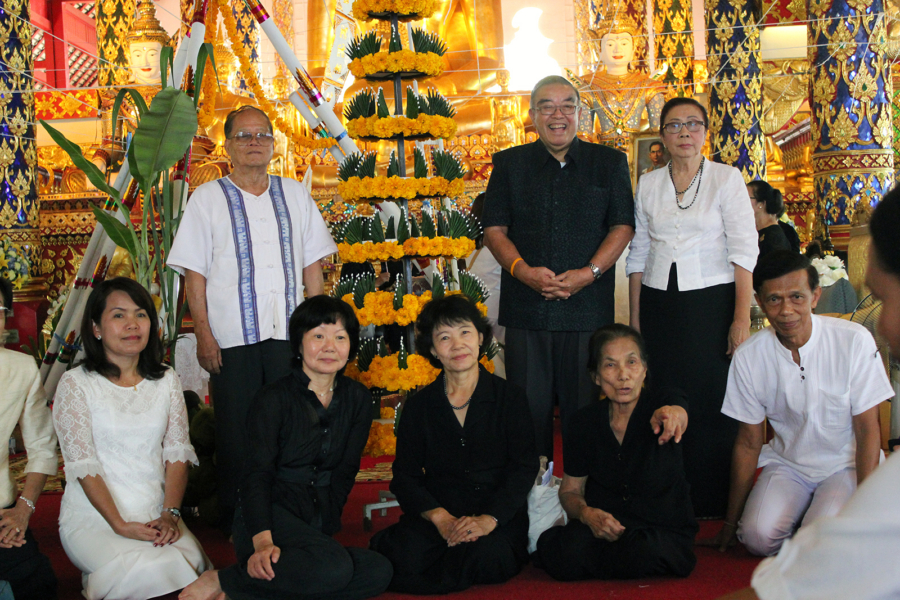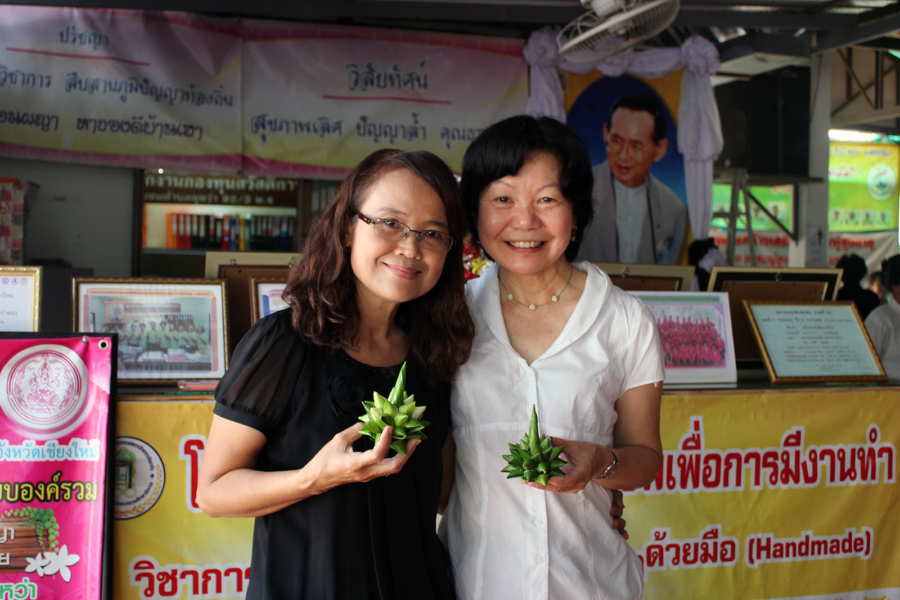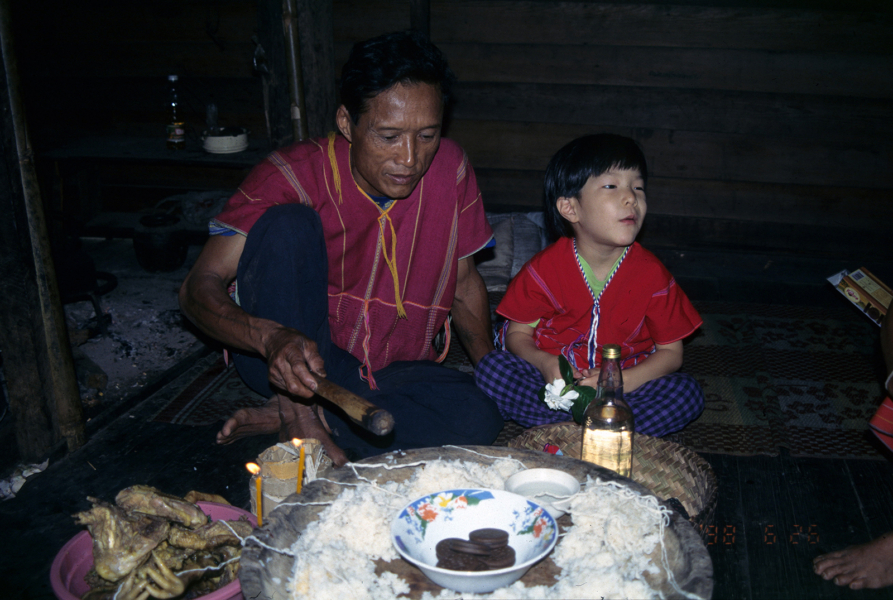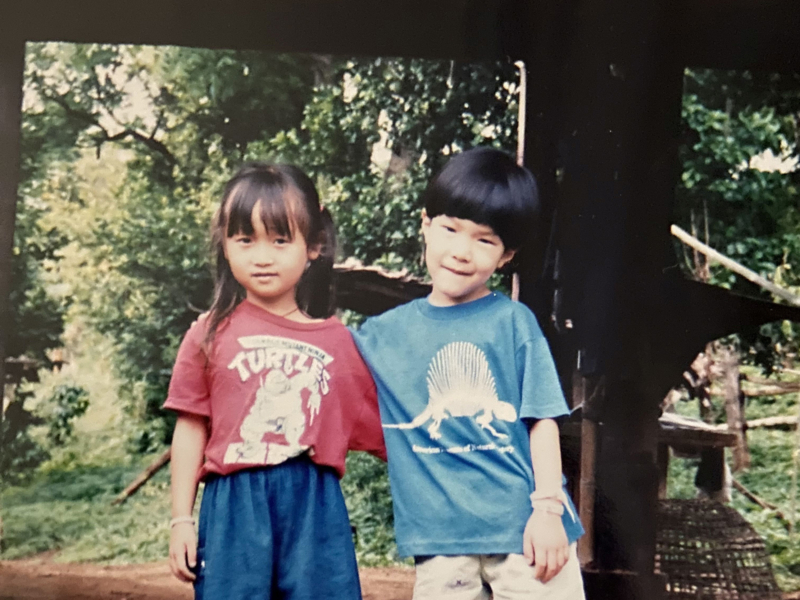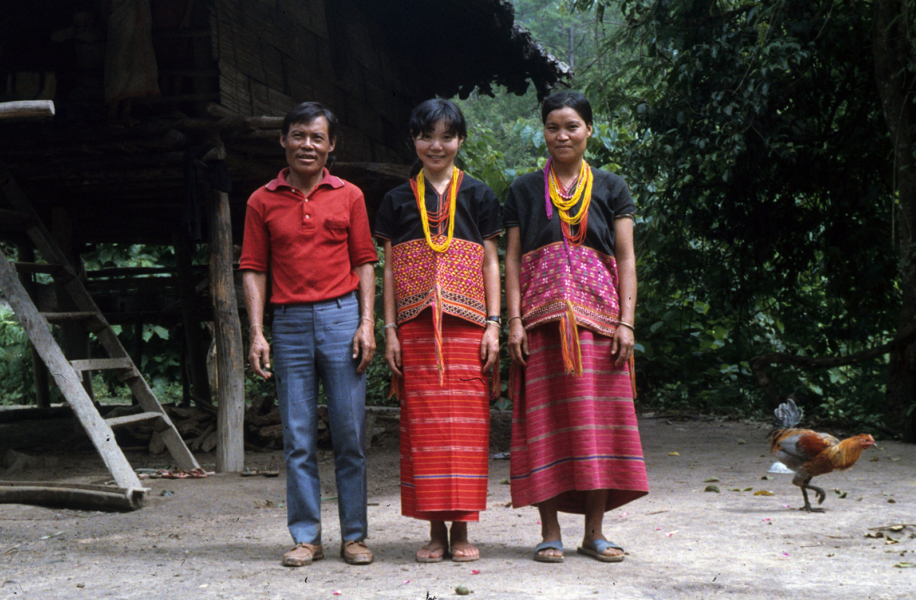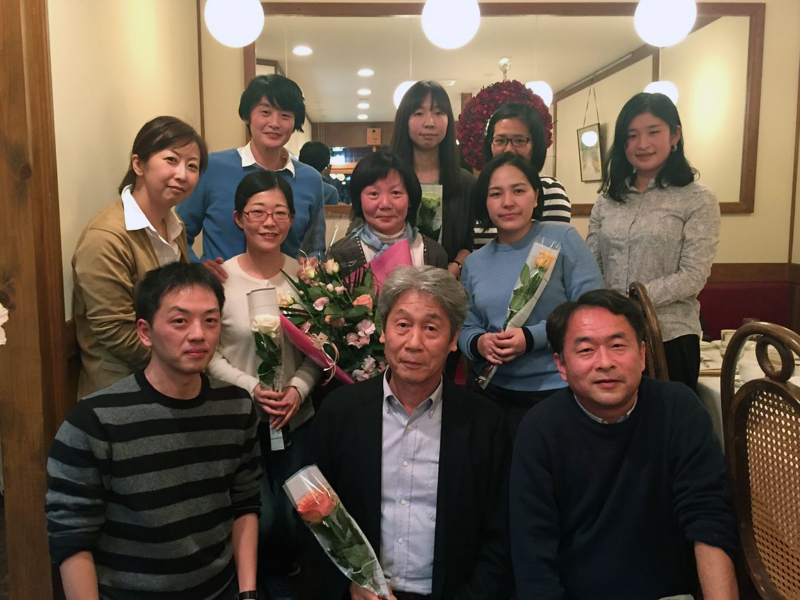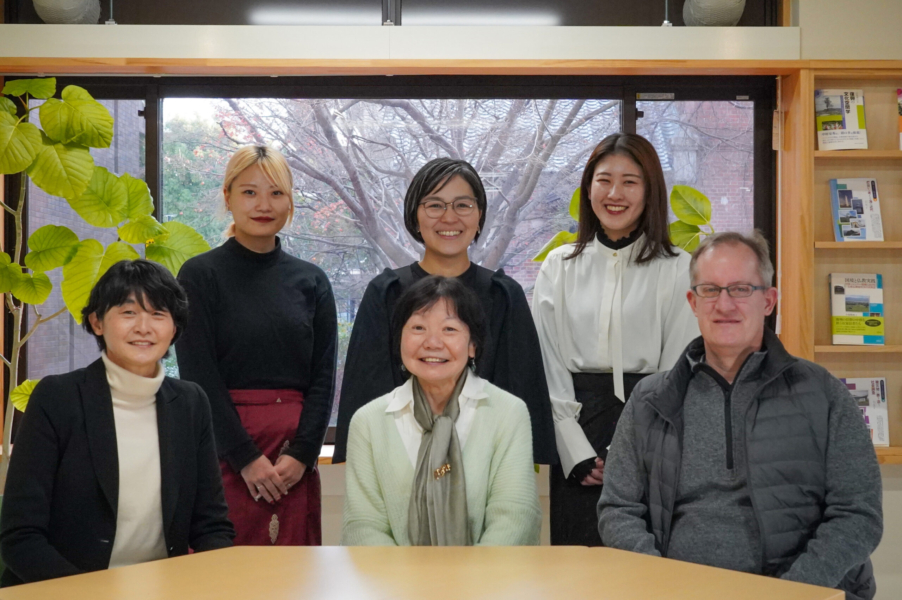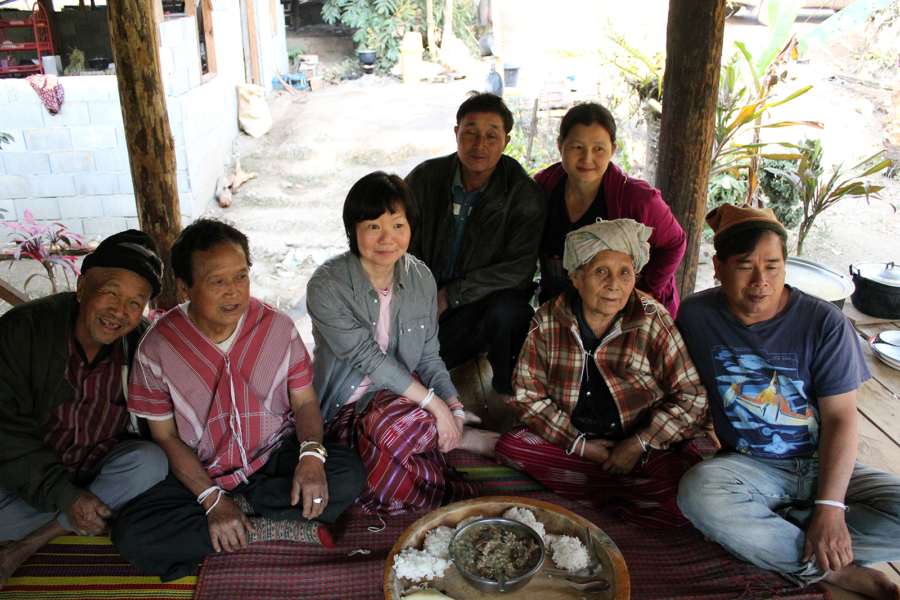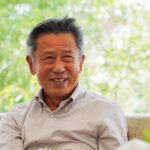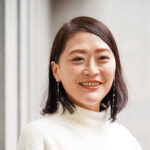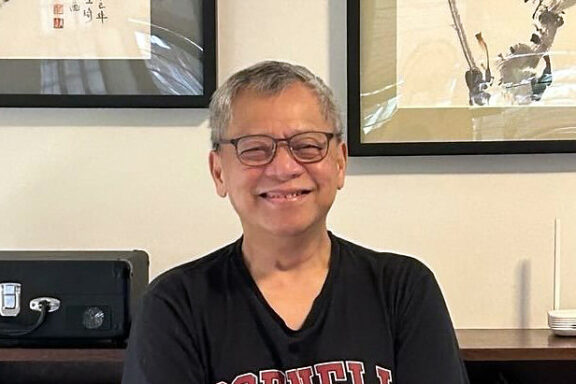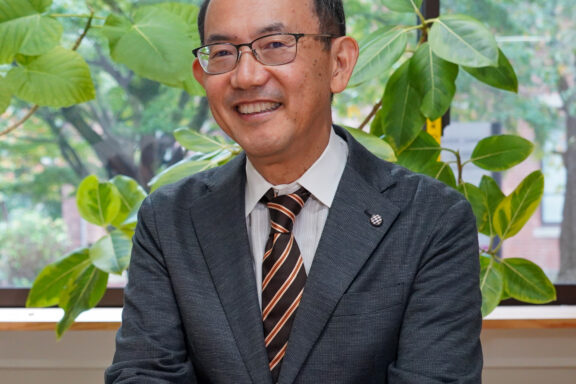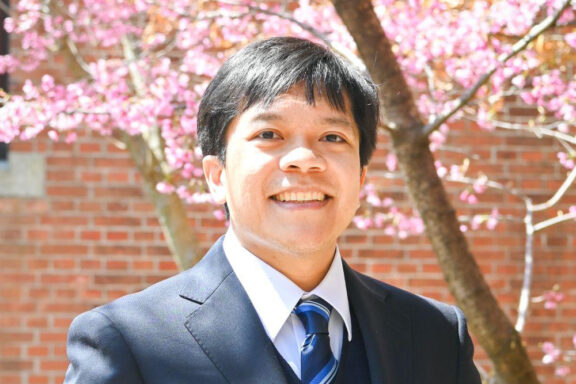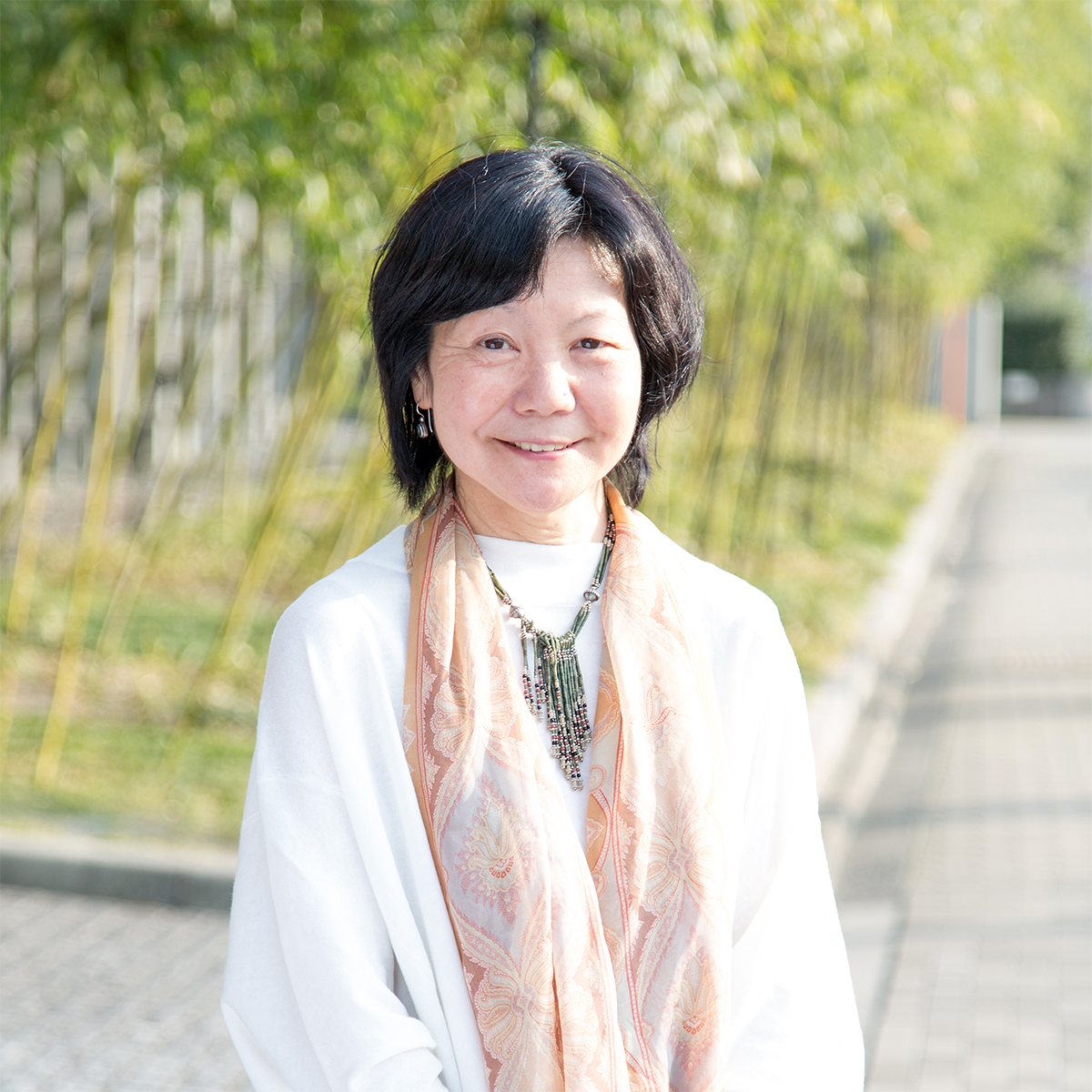
Yoko Hayami is a professor at Center for Southeast Asian Studies (CSEAS) (retiring in March 2024). She obtained her PhD degree in anthropology from Brown University in the US (1992) and joined CSEAS as an assistant professor in 1996. Her research on religious and social dynamics among the Karen ethnic minority living across northern Thailand to the wider area of Myanmar resulted in publications including the English-language book Between Hills and Plains: Power and Practice in Socio-Religious Dynamics among the Karen (Kyoto University Press and Trans Pacific Press, 2004). She has also conducted research and published on topics such as gender, family and ethnicity in the region including a monograph in Japanese entitled Ethnography of Difference and Connection: Ethnicity and Gender in Karen Society in Northern Thailand (Sekaishisosha, 2009). She has also conducted collaborative research on family and care in Southeast Asia. Currently, she is conducting research on the theme of aging and care, not only in the mountainous areas but also in and around Chiang Mai, the central city of Northern Thailand. She was CSEAS Director from April 2018 to March 2022.
In the following interview, Professor Hayami responds to questions from her former students to commemorate her retirement.
1. The roots and themes of research
──What inspired you to become a researcher? What did you aspire to become during your high school and university days, what were you interested in?
When I was in high school, I just had a vague idea that I wanted a job that would take me abroad. Upon entering university, I became interested in cultural anthropology. Older students (senpai) in the anthropology zemi1 were very active in organizing study and reading groups, and there was plenty of stimulation. But I was not a very serious student until the field research training course began in the latter half of my sophomore year. This became my source of motivation to study.
Both in high school and university, I joined a mountaineering club. Reaching the summit is always a joyful experience, but I also loved the feeling that comes after walking for days along the ridges deep in the mountains and descending—when the sound of the stream becomes louder and signs of human settlement begin. I wanted to do my field research training in a village at the foot of such mountains.
With an interest in religion and bodily performance, I wanted to research festivals that included performance. I chose a research site at the foot of the southern Japanese Alps where locals held a winter festival called Shimotsuki Matsuri. I visited three times, and the final experience of the festival in the snow-deep village was truly breathtaking. This experience and the subsequent process of writing my thesis taught me the fun of anthropology. I examined existing theoretical frameworks on rituals and enjoyed deciphering the relationship between the daily life of the village, the history I had learned from the villagers, and the time-space relationships within the festival itself. I was fascinated by the entire research and writing process.
──What were your influences in graduate school?
When I entered graduate school in 1981 (in the United States), I was interested in performance and the body in religious practices. In addition to seminars and classes, we were required to take core courses that constitute the discipline of anthropology in the US. These included social theory, linguistic anthropology, and archeology. Then, to prepare to launch our own research, we were required to take an oral exam and submit a research proposal, all of which demanded wide and voluminous reading. My mentors at the time were Robert Jay, whose ethnography from a Javanese village I admired immensely, and William Beeman, who was a linguist and theorist of performance and communication, in addition to being a performer himself. I was very fortunate to also study with Louise Lamphere and Lina Fruzzetti, who were leading scholars of gender in anthropology in the 1980s. Daily interactions with fellow graduate students made my student days enjoyable and stimulating. These first few years helped me gradually formulate my questions and formed the foundation for my subsequent research.
The most influential book that helped narrow my research focus was The Sociocultural Transformation of the Karen People by Professor Shigeru Iijima, who, coincidentally, spent some years at our Center as an Assistant Professor. The book dynamically depicts the changing world of ethnic minorities in the context of national integration in Thailand. I was fascinated by the fact that while some Karen2 practiced ancestral spirit rituals, significant numbers of Karen had abandoned the rituals and become Christian. I wondered what prompted them to do this and what it meant for an ethnic minority to convert to Christianity in a country where Buddhists were the overwhelming majority.
In 1987, I arrived in Thailand to start research for my doctoral thesis. After surveying the northern region, I decided on a Karen village 150 kilometers northwest of the city of Chiang Mai as my research site. It is a beautiful highland area with a mixture of pine and dipterocarp forests at an altitude of about 1,000 meters. About 40 percent of the village population was Christian and the remainder practiced ancestral rites.
──You have explored several themes since arriving in that village. Can you explain how each of these came about and how your research proceeded? First, can you tell us about your research on religious dynamism among the Karen?
My research can be divided into roughly three main themes, overlapping in time. The first is the study of religious and social dynamics among Karen in Thailand and Burma, or, how they seek sources of power. The initial research concerned how Karen practice spirit rituals, Christianity, and Buddhism on the periphery of the Thai state, and whether and how this related to their status as an ethnic minority.3
To protect health and well-being, ancestral rituals must be performed with the proper procedure according to various rules and regulations. When, for example, a participant in the ritual suddenly falls ill, it is blamed on some error committed in the ritual procedure. You might think, “What’s the big deal, it’s only a ritual.” But everything in life is regulated by this ritual, including social relations, living arrangements, income generation, and even rearing livestock. To the untrained eye, the ritual appears to be a very quiet and nondescript act of feasting, but it commands all aspects of life and is very cumbersome. What is noteworthy is that although ritualist villagers make efforts to maintain and follow the procedures thoroughly and take the ritual practice very seriously, they can be triggered to abandon it for a totally different way of life if an alternative source of power that will protect them from the retribution of the abandoned ancestral spirits is available. One could say that two orientations coexist in their religious practices: a traditional orientation, so to speak, to earnestly follow the customs handed down from prior generations, and an innovative orientation to abandon that life for an alternative “dependable” power in place of the ancestral spirits. In my study area alone, sources of power that provide the means for this innovation are varied and include conversion to Christianity, ritual banishment of ancestral spirits by monks, devotion to Buddhist saints known as khruba, and participation in various religious movements. Furthermore, if we broaden the historical period and geographical scope, we find a great variety of religious movements, some of which had already been reported on the Burmese side since the late 18th century.
Scholars of the region such as Charles Keyes and James Scott have argued that the upland mountain minorities of Zomia, including upland Karen, convert to Christianity to differentiate themselves from the majority Buddhists in the lowland states. It is an attractive storyline that the choice of religious practice further delineates and emphasizes ethnic differences. But are upland minorities consciously making such choices with the intention of delineating themselves from lowlanders? Certainly, as a result of choosing Christianity, they are differentiated from the lowland Buddhist culture and society and, in the case of Burma, this delineation has been politicized in the long-lasting ethnic conflict. However, it was impossible to deduce such conscious intention by the people in my study area, who made religious choices from among various available options as they became accessible. Their priority was to live life according to a valid and “dependable” source of power that was accessible at a given time.
Why is such religious dynamism so prevalent? In other words, why were the Karen constantly seeking a “dependable” power, either by converting to Christianity, joining religious movements, or devoting themselves to saintly monks? Researchers analyzing similar phenomena have explained this theoretically as the “relative deprivation” of uplanders in relation to lowland state power and majorities, as modernization, as the “contact with civilization,” and so on. For me, the answer to this question gradually became clearer as I continued research over wider geographical areas and throughout a longer history of the Karen. I encountered saints and leaders of religious movements in the stories of people from widely distant places. As if connecting the dots into lines, the genealogy of traditions passed on by the people, the stories that have continued to be spun—with slight gaps and differences as they spread—revealed that it is precisely because of these shared and continuous narratives that people seek the next source of power: to carry on the “lineage” of saints/prophets. In the search for a better life both spiritually and materially, while being tossed about by the currents of colonization, national struggles and modern national integration, globalization, and on and on, they have developed and adopted religious practices, sometimes borrowing from other, especially lowland, peoples, beyond the borders of any country, to secure “dependable” sources of power and protection.
Thus, my study of religion, which began from one village with the question “what does it mean to abandon the rituals?” took me across time and space, to see how the “traditional” and “innovative” evolved and took different shape. I followed two strands of interest. One is the history of Karen Christianity. The Baptist mission among Karen in Burma, which began in the 1830s, is considered a remarkable achievement in missionary history. In the eyes of the missionaries, success of their mission was achieved by civilizing a barbaric people by converting them en masse. But if we turn the tables and view the Karen as the protagonists, then we can see their conversion was a means to actualize the innovative orientation, as they could secure a dependable power in God and the Bible. From this perspective, it is the missionaries who play a role on the Karen stage.4
The second strand is the collective Karen devotion to Buddhist saints known as khrubas.5 In many cases, devotees abandon their villages and hitherto lives to come together and live in security under the protection of a Buddhist saint who is a descendant of a long line of charismatic leaders. In other cases, Karen refugees have sought a “dependable” source of power and sustenance with these saints in the midst of ethnic conflicts in Myanmar.
Following the rich religious world of Karen Christianity, Buddhism, and religious movements on both sides of the border has led me to reconsider how to think about religion from the Karen context instead of from theories that derive from modern nations and centers.
──Your scholarly work on women and gender is also rich. How did this come to be?
This theme, examining crossroads of differences, also began from my Karen research site. As I mentioned above, during my graduate studies, I had the opportunity to learn about gender in anthropology. But it was fieldwork that prompted me to further investigate women’s experiences. In terms of appearance, I am not so different from Karen women, so during my fieldwork, I was often grouped with Karen women and spent a lot of time with them. This led me to closely observe women’s experiences from marriage, childbirth, and childcare to old age and death. At the time (the late 1980s), as long as a woman bore a child and became a mother, her experiences, at least within the village, were not necessarily one of disadvantage. Rather, due to the prevalence of matrilocal residence (living with the wife’s parents and family after marriage), Karen women lived comfortably among their own kin. However, women were wary of stepping out of the village or being exposed to the eyes of lowland Thai men, who came in from outside the village. I observed how in such situations, Karen women’s gender and ethnicity emerged together in their consciousness. Karen women are both desirable wives and objects of sexual attention for lowland Thai men, as they are said to be obedient, hardworking, uncomplaining about their poverty, and do not require expensive bride wealth upon marriage. However, once a woman paired up with a Thai man and was subsequently abandoned, she could no longer expect to have a decent Karen husband. Thus, parents tried to quickly match up their daughters with a suitable Karen man before they were “spoiled.” It was a time when many poor women from mountainous areas were engaged in sex work in Chiang Mai City. Stories of Karen women being abandoned by Thai men and left to fend for themselves spread and became a stereotype. Moreover, whenever a local administration organized an event, it required that “women from the mountain areas must wear their ethnic costumes.” In such a way, gender and ethnicity mutually articulated existing differences and delineated accompanying power relationships.6 Based on these observations, I examined how power and differences are reinforced at the intersection of gender and ethnicity, and how women experience their vulnerable position at this crossroads. However, I also emphasized how being at this crossroads, Karen women who marry Northern Thai men were in various ways enabled to formulate new connections and gain agency. In other words, differences do not necessarily lead to disconnection, but can also be an opportunity for new connections.
──What about the theme of family?
While the family appears to be an important unit in the daily life of a village, there is no word for “family” in the Karen language. The concept of “family zone” presented by Professors Yoshihiro Tsubouchi and Narifumi Tachimoto, both of whom are our predecessors at this Center, seemed pertinent for understanding the Karen case. Instead of the closed nuclear unit that we are familiar with in Japan, the two professors came up with the concept of an open “zone,” or network, to describe family in Southeast Asia. On the other hand, political leaders of various modernizing states in the region, especially those of development dictatorships, made abundant use of the “family” discourse to build modern nations. I realized that although the family was undergoing changes in tandem with the gradual advance of industrialization, there was little empirical research on the family in Southeast Asia. In light of this, Professor Junko Koizumi and I formed a sub-group in the Core University Project to conduct joint research with scholars from the region and Japan on the family and its transformation in Southeast Asia. Examining family from the perspectives of history, ideology, and on-the-ground practice, the research provided us with initial insights into how families have transformed during the course of modernization and how family ties have been maintained and changed.7
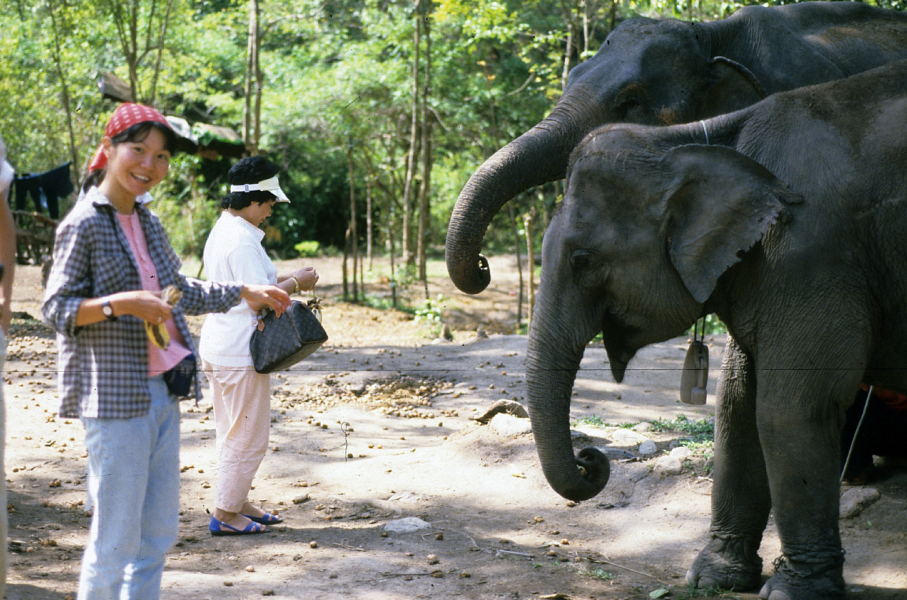
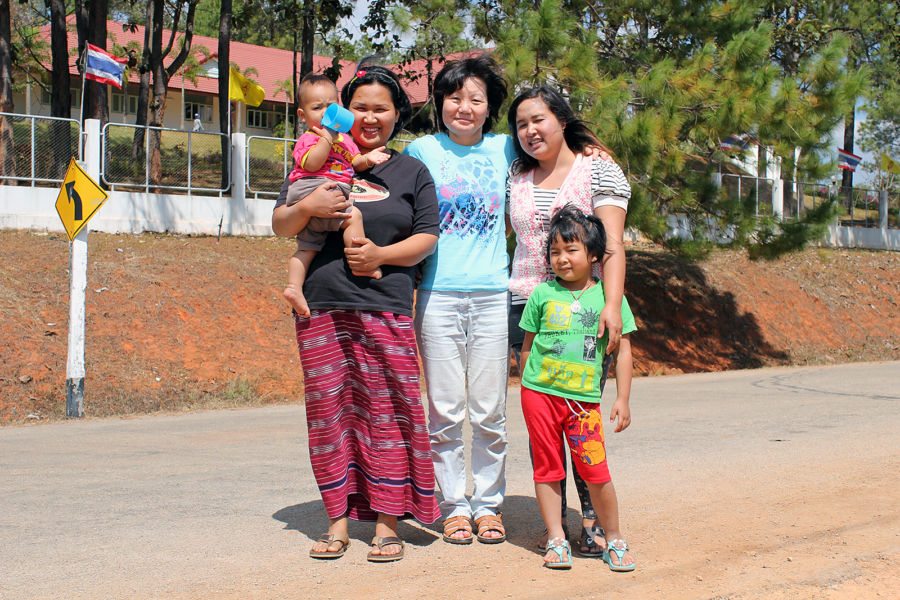
──Your latest research has been on care and aging in Southeast Asia. What can you tell us about it?
The theme of care and aging in Southeast Asia began as part of the GCOE8 project “In search of sustainable humanosphere in Asia and Africa” (FY2007–2011). I started by thinking about “care” in my own Karen research village. Since care is relationship, I wanted to first consider it as it is embedded in the daily social contexts of which I had enough familiarity, so that I could understand the intimate relations in everyday life and be able to listen carefully to what the villagers had to say about them. Then, recognizing that care has been discussed primarily in the context of advanced industrial societies, I launched a KAKEN (Grants-in-Aid for Scientific Research) project, “Social Foundations of Care in Southeast Asia,” to examine the various ways care is practiced in Southeast Asia.9
After completing the above research, I decided to “descend to the lowlands” to conduct a detailed study in and around Chiang Mai city. Thailand is the second fastest aging country in Southeast Asia and aging has been a recognized social issue in Thailand since the turn of the 21st century. The urgency with which aging and care was felt and dealt with is more visible in lowland Thai society, both rural and urban. I was fortunate to receive the Abe Fellowship, which enabled me to spend some substantial time on the study. I examined how elder care in family and community is practiced in various settings in city, suburban, and rural areas where the aging population is progressing. I observed how local activities are organized, how training schools for care givers, home care, and elderly care facilities operate, and the roles that NGOs, temples, and government officials play. I examined not only how elder care is practiced, but also how it is distributed and discussed. Unlike early industrializing countries, Thailand is aging faster than the speed of economic growth and social change. This means that the Thai experience of aging and care will differ from foregoing examples and provide a perspective on how Thai family and local society is transforming.10
An unexpected finding came from interviews I conducted in an urban elderly home. I visited the facility almost daily to observe the activities and listen to stories that the residents narrated about their lives and how they spent their days there. My concern was not in the truth value of their narratives—whether their stories matched historical facts—but rather, I listened to how they reflected and talked about their lives and observed how they face old age in this setting. I learned that aging and end-of-life experiences are rooted in an individual’s life and values and that each person has their own way of living and crafting a better life.
──This is quite a broad range of research themes. How are they all related, or not related? What questions have you considered throughout?
The various themes above that may seem scattered and disparate all stem from my original Karen field site. How has the contact point between the peripheral world in the mountains and the modern world been widening? How have the hills transformed as they are encompassed by the state and the market? I have pursued these questions through the lens of religion, citizenship, forest rights, tourism, family, ethnicity, and so on. Up to this point in the interview, I have referred to “Karen” as a fixed category. As long as I stayed in the village, this category was never questioned. However, as my research spread out over wider areas and times, I not only found commonalities, but also significant differences among the Karen on the two sides of the border in the Thai and Burmese states respectively. There were differences in the language, such as vocabulary and pronunciation, in the cultural traditions, and, most strikingly, in the positioning and historical evolution of the Karen. Some have engaged in armed conflicts, joined forest rights campaigns, or claimed their cultural heritage as an ethnic group. What, then, does it mean to talk about Karen as if a single category exists? Who are “the Karen”? I have continued to consciously ask this question, constantly aware that who the Karen are today is an outcome of historical processes.11
As researchers, we tend to bring in or apply frameworks and narratives that are far removed from the daily lives of the people involved. By questioning the relevance of these narratives and concepts from different perspectives, especially of those who are vulnerable, we strive to gain new insights. These should then be considered within the dynamics of macro institutions and processes within the regional and larger contexts. Throughout, we must remain aware of how we, as researchers, participate in the alignments of power.
2. Connections in the field
──Please tell us about your encounters with Thailand and the Karen people. Are there particularly memorable words that you recall from people in the research sites?
It has been 36 years since I first visited the village. It is something like a base for my anthropological thinking. Whenever I want to launch a new topic, I start by going to the village and talking to the people there. In daily life in Japan too, I often wonder what villagers would do in certain situations. Those who were still young children during my earliest research now have their own adolescent children, or even grandchildren, while the adults who had helped me then have now reached old age. I plan to visit this February for the wedding of a grandchild from my host family. The bride-to-be studied Chinese at a university in Chiang Mai, went on to study in China, and is now teaching Chinese at a private school. She says she will come visit me in Japan. When I think back to when I started my research, it feels like a world apart. Women travel far more easily now, and in many ways we have grown closer. Whenever I leave the village, my host father says, I think maybe more than half-seriously, “Next time you come, stay longer. We’ll build you a house in the village.”
──In one memorable episode, you were so engrossed in your research that you forgot to call your family at home and were summoned through a radio broadcast. Can you tell us a little more about that incident?
Nowadays, most villagers have mobile phones to maintain daily contact with family members in the city or elsewhere. But at the time of my earliest research, there was no electricity, running water, or telephone lines in the village. During my first long stay in the village, I came down from the hills to the city every month to go to the post office to make international calls to my family in Japan. One time, I had to delay this monthly call due to a series of rituals and other events that I wanted to attend in the village. At the time, there was a radio station in Chiang Mai that broadcast programs in each of the hill languages twice a day throughout Northern Thailand. Villagers used this program to announce wedding dates, funerals, and other events to distant relatives in different parts of the region. One day, I heard over this Karen language radio broadcast, the announcement: “Ms. Yoko from Japan, please contact your family.” Concerned for my well-being, my family had sought out this method to contact me through the radio station. At the time, there was at least one radio in every five households, so that day, wherever I went in the village, I was told, “Hey, I heard your family is worried about you.” Inevitably, the following day, I descended to the city. Considering that nowadays I can contact people in the village through SNS from Japan, the changes in the past 30 years have been tremendous.
──I was told that during your absence, villagers had dreamed of you. It is an episode that suggests your mutual consideration for each other. Please tell us about your relationship with people in the field.
Whenever I visit the village after a period of absence, someone always tells me “I dreamed about you last night.” Hearing this repeatedly, I thought it might be some form of social diplomacy, but after a while I began to think. For the villagers, dreams are understood to mirror the acts of the soul, or k’la. It would not be surprising if on the eve of my visit to the village after some absence, my soul had gone ahead and met their souls. The words that seemed to me like a routine way to greet someone, are an expression of this understanding. Dreams are thus taken quite seriously. Once when I had a bad dream during my stay in the village and told a villager about it in the morning, I was told, “That’s not good. Let’s do the ritual to call back your k’la.” The understanding is that I had a bad dream because I had accidentally dropped some of my 37 k’la when I was walking around town and it had become attached to dog waste and other bad things on the roadside. To ensure my well-being, I should ask to have a ritual to call back my k’la.
──You have mentioned that your experience with people in the field changed when you took your child with you to the field site for the first time. How exactly did it change?
I was unable to do fieldwork for a while due to childbirth and childcare, but when my son turned 4 years old, I left him with my family in Japan, and then when he turned 5 years old, I visited the research site with him for the first time. The daughter of my host family herself had two daughters, the older of whom was the same age as my son. They quickly became friends and even though they did not understand each other in language, they were happily running around in the rice paddies, along the mountain paths, and in the bamboo-walled houses. The villagers now realized that I had a real family in Japan, which perhaps made me someone more than an occasional visiting stranger from a country called Japan—I was recognized as the mother of Saw Pae Xhu (my son’s Karen name).
3. Career and life challenges
──How did you decide to become a researcher?
Toward the end of my junior year of undergraduate study, I began job hunting. It was before the Equal Employment Opportunity Law, and I was shocked by the blatant limits imposed on my career choices because I was a woman. It was something I had never really thought about before then. As this was around the same time that I was experiencing the fun of anthropology, I decided to put job hunting aside for a while and study a little more. So, it was not as if I was determined to become a “researcher” from the beginning, nor can I, looking back, pinpoint at what point I decided to be a researcher.12
As you can probably tell from what I said above about my student days, I didn’t enter graduate school determined to become a researcher. I often wondered if I was capable and whether I should consider other paths in life. But after my field research, coming back to Japan, I felt at least obliged to finish writing up. I felt I owed it to the villagers who put up with me through my research. Since then, it became difficult to withdraw. But just as I finished my PhD thesis, I gave birth to my son. As a beginning researcher, I had the toughest time then. While bringing up a baby was a joy, during the busy period of childcare, I felt as if I was being left behind from the world, especially since I had little academic connection in Japan. I blindly applied for positions and kept being turned down. Even though I might have given up at that point, at least there were things I wanted to write about, so I kept doing that to drown my solitude and anxiety, and that eventually helped me to the next stage.
──What are the joys and hardships of research for you?
For me, the excitement in research arises from four parts of the process. The first is when there is an unexpected finding during field research. The second is when I find some hints regarding how to think about those findings, such as during research in another field location or from someone else’s writing. The third is when I come up with an idea inspired by such findings and hints. The fourth is when I am able to put the idea into words effectively, whether through writing or speaking. The toughest for me seems to be the final one.
──Have your research interests changed or broadened from your work with and guidance of students? What were some of the circumstances?
I can’t point to any one experience in particular, but because every graduate student develops their own unique theme and research site, hearing about and witnessing every step of the process is enjoyable for me. I can witness a new and evolving adventure from the sideline. Although when a student struggles, I feel the struggle too. It feels presumptuous to advise on themes and places with which I am not familiar, but I can at least provide advice on the process of reading, formulating questions, entering the field, the analysis, and the writing up. The process is a learning experience for me too and it makes me happy to see the results of their research.
──Do you have an ideal person that you have been striving to emulate as a researcher or educator? Or an ideal you have pursued as an educator?
If I am to name one person who was, perhaps not so much an ideal to aspire to, but one to whom I owe my scholarly career, it would, with deep gratitude, be the late Professor Yukio Hayashi. I had the opportunity to observe him conducting interviews in the field during joint research projects. His skill and demeanor, penetrating and listening thoroughly, were indeed amazing. His effectiveness as an incredible fieldworker was not something I could emulate, although it certainly was an inspiring example. Before coming to Kyoto, I had few acquaintances in Japanese academia, and I would never have had the opportunity to come and work at this Center if it were not for Hayashi sensei, who invited me to his seminars and workshops. I have tried to follow his example and provide opportunities for young researchers from Japan and abroad to come to our Center as much as possible.
I cannot talk about any big ideal philosophy as an educator, but I can say this much. It is rare for young persons in their 20s to have, from the beginning, the confidence to pursue an academic career. It is more a time of hesitation for both men and women alike, but women, especially those who have grown up with Japanese gender norms up to recent years, tend to doubt if they have the ability and qualifications to devote themselves to research. I have tried my best to encourage students that if they have an interesting question that they want to pursue, they should go ahead, whether confident or not. I have tried to convey the importance of having driving questions that will push them to do research, and the importance of reading widely for that purpose. Speaking for myself, teaching was all about supporting and encouraging to pursue this path and enjoy together.
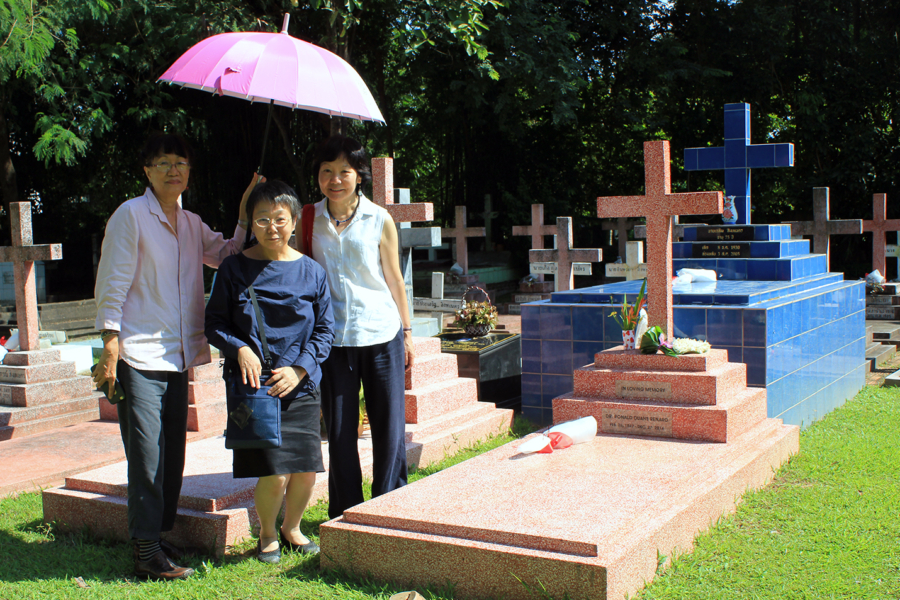
4. Future plans
──What are your future plans?
I have yet to produce a substantial output from the research on elder care that I have been conducting since 2016. In the meantime, the situation on the ground has been changing rapidly and I should put things into shape soon. When I began this research, interest among Thai researchers in aging in their country was only limited to a specialized group. But now it is becoming a major issue among Thai humanities and the social science researchers. An increasing number of Thai scholars are coming to Japan to learn how Japan, an early aging country, is responding to the situation. Last year, for example, I spent one month with a scholar friend who came to Japan for this purpose. Touring various parts of Japan made me realize how little I knew about the situation in Japan. I would like to continue such exchange with researchers from Thailand and Southeast Asia.
──How do you plan to connect with the field village in the future?
As I mentioned above, I will be going to a wedding in my host family in February. Like this, my relationship with the villagers will continue. Whether it leads to further research or not, and whether they build a house for me or not, I cannot say. I do hope that I can take on a new theme from the village again.
(January 9, 2024)
Notes
- In Japan, university students typically participate in a “zemi,” or seminar, with a small group of students of the same major under the guidance of an experienced scholar. ↩︎
- In 1987, the Thai government listed “the Karen” as the largest “hill tribe” in the country with a population of 380,000. Karen languages are believed to be related to the Tibeto-Burman group of the Sino-Tibetan language family. ↩︎
- Hayami, Yoko. Between Hills and Plains: Power and Practice in Socio-Religious Dynamics among Karen. Kyoto University Press and Trans Pacific Press. 2004. ↩︎
- Hayami, Y. (2018) “Karen Culture of Evangelism and Early Baptist Mission in Nineteenth Century Burma.” Social Sciences and Missions, 31(3–4), 251–283. ↩︎
- Hayami, Y. (2023) “Labour of Devotion: Material Construction and Charisma of Saintly Monks in the Myanmar–Thai Border Region.” The Asia Pacific Journal of Anthropology, 24:1, 18–35. ↩︎
- A book published in Japanese:『差異とつながりの民族誌─北タイ山地カレン社会の民族とジェンダー』(Ethnography of differences and connectivities: Ethnicity and gender among hill-dwelling Karen in northern Thailand). 2009. “Traversing Invisible Borders: Narratives of Women Between Hills and City.” In Roxana Waterson, ed. Southeast Asian Lives: Personal Narratives And Historical Experience (Research in International Studies Southeast Asia Series), pp. 250–274. Ohio University Press and NUS Press. 2007. ↩︎
- Co-edited with Junko Koizumi, Ratana Tosakul, and Chalidaporn Songsamphan. The Family in Flux in Southeast Asia: Institution, Ideology and Practice. Kyoto University Press and Silkworm Books. 2012. ↩︎
- Global Center of Excellence grants are given by the Japanese government to fund large research projects. ↩︎
- Edited volume from the KAKEN project: 『東南アジアにおけるケアの潜在力―生のつながりの実践』(Potentialities of care in Southeast Asia: practicing connectivities in life). 2019. ↩︎
- Hayami, Y. (2019) “Between state and family: Biopolitics of elderly care and emerging communality in Northern Thailand.” Southeast Asian Studies, 8(3), 387–412. ↩︎
- Hayami, Y. (2007) “Redefining Otherness from Northern Thailand: Notes Towards Debating Multiculturalism in the Region.” Japanese Journal of Southeast Asian Studies, 44(3), 283–294. ↩︎
- Interview with Kyoto University Gender Equality Promotion Center https://www.cwr.kyoto-u.ac.jp/rensai/kenkyusya/2010/02/21hayami.html ↩︎
This article is also available in Japanese. >>
「尾根をくだり、小川のせせらぎを聞く:
速水洋子教授退職記念インタビュー」

